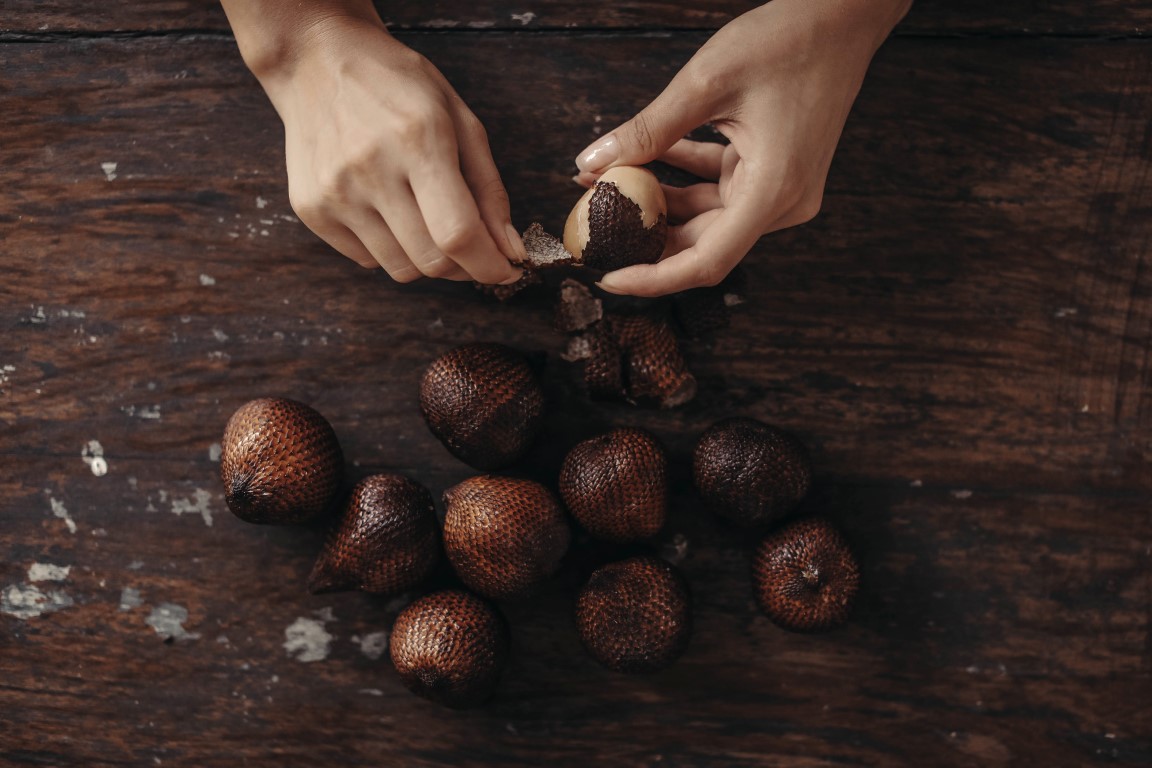
Me likka salacca zalacca
By Morgan Hannah, Life & Style Editor
The fruit itself looked like a large clove of garlic covered in snakeskin to be honest, and it tasted like a dry but sweet apple, pineapple, and banana combo and had an apple-like crunch.
You likka salacca zalacca? I likka salacca zalacca. Lemme tell you all about salacca zalacca!
Also known as snake fruit, this delicious treat is native to Indonesia but is also found in neighbouring countries Malaysia and Timor. I personally found them in a street cart down a dimly-lit alley on Gili Trawangan in Indonesia!
This bulbous-bodied fruit tapers off at one end, and much like a fresh fig it is entirely encased in shiny dark reddish-brown scales—and sometimes even spikes! This deceptive fruit’s skin is quite thin and easy to peel off (if you know what you’re doing). And I didn’t, so I had to get the owner of the cart to show me. First, she started by pinching the tip and breaking the skin. Then, she expertly peeled back the scales—going against the grain—to reveal the light yellowish-white flesh underneath. The yellow-white lobes of fruit have a fine, film-like layer that can also be peeled away which she did—almost like peeling a hardboiled egg. The fruit itself looked like a large clove of garlic covered in snakeskin to be honest, and it tasted like a dry but sweet apple, pineapple, and banana combo and had an apple-like crunch. I’ve since found out that some varieties can be drier and have a flaky texture (which I’m glad I didn’t get to eat), and others have a more spongy and succulent texture (which I think I would’ve loved!).
Another name for salacca zalacca is the “Memory Fruit” or “Fruit of Memory” because it is loaded with potassium (much like a banana) and pectin—important nutrients for brain growth and development. The fruit also contains thiamine, iron, vitamin C, and calcium. And it’s quite the ideal vacation fruit for us Westerners trying on new foods overseas, as snake fruit has been known to stop the brown river from flowin’, if you catch my drift.
In Indonesia, snake fruit is as common as apples and oranges are in the Americas; they are a regular household item. Snake fruit grows on short barrel-like palm trees with large spiked stems, which can grow up to six meters long. The fruit sprouts off the base of the palm tree in little clusters and can be eaten fresh, candied, pickled, canned, juiced, fried into chips, boiled with sugar into a sweet spread, or on the porch at 11 PM while listening to distant fireworks explode and swatting at mosquitos.
This has been Fascinating Fruit Facts—tune in next time to find out which fruit we’ll be chatting about!



